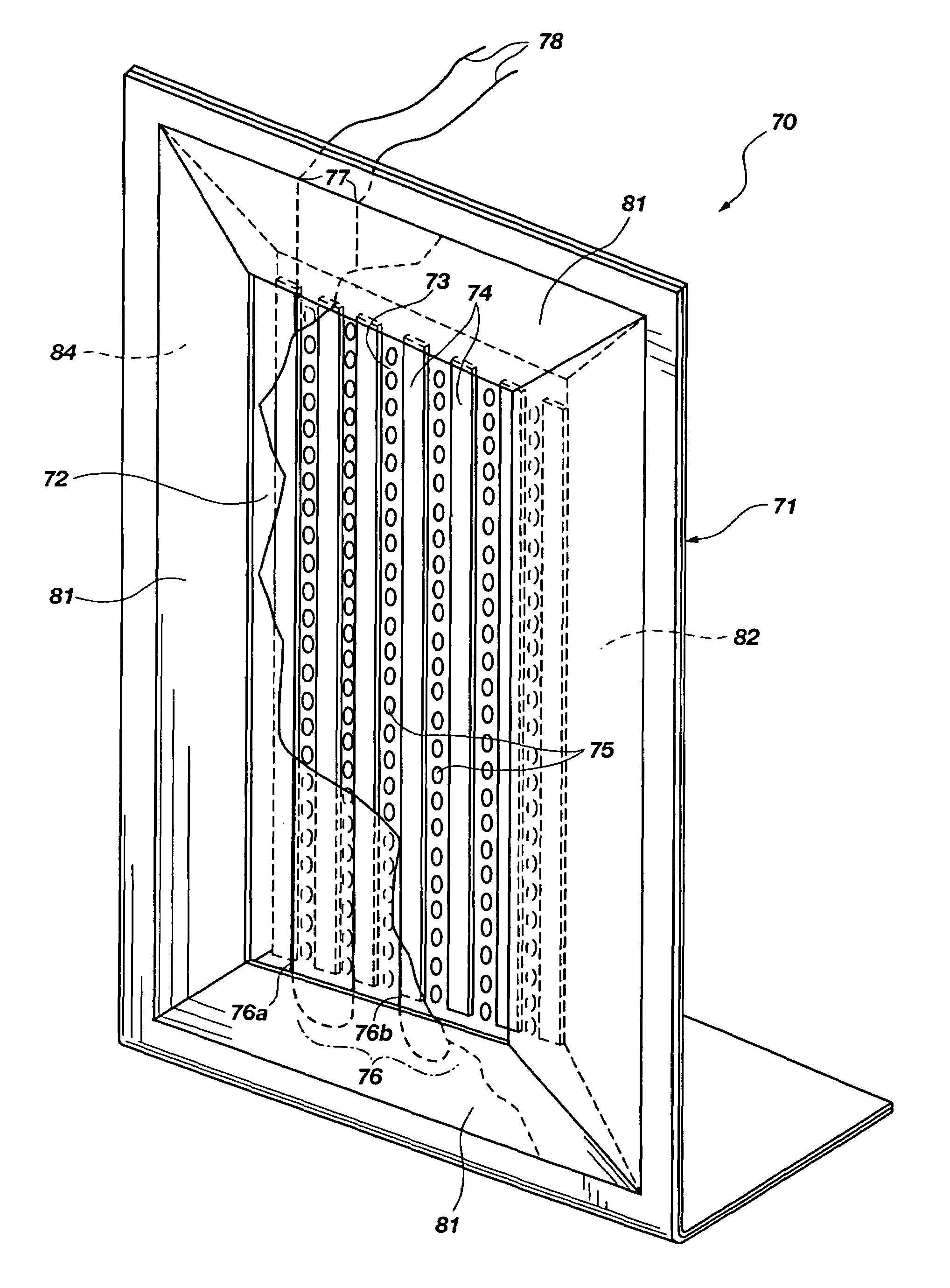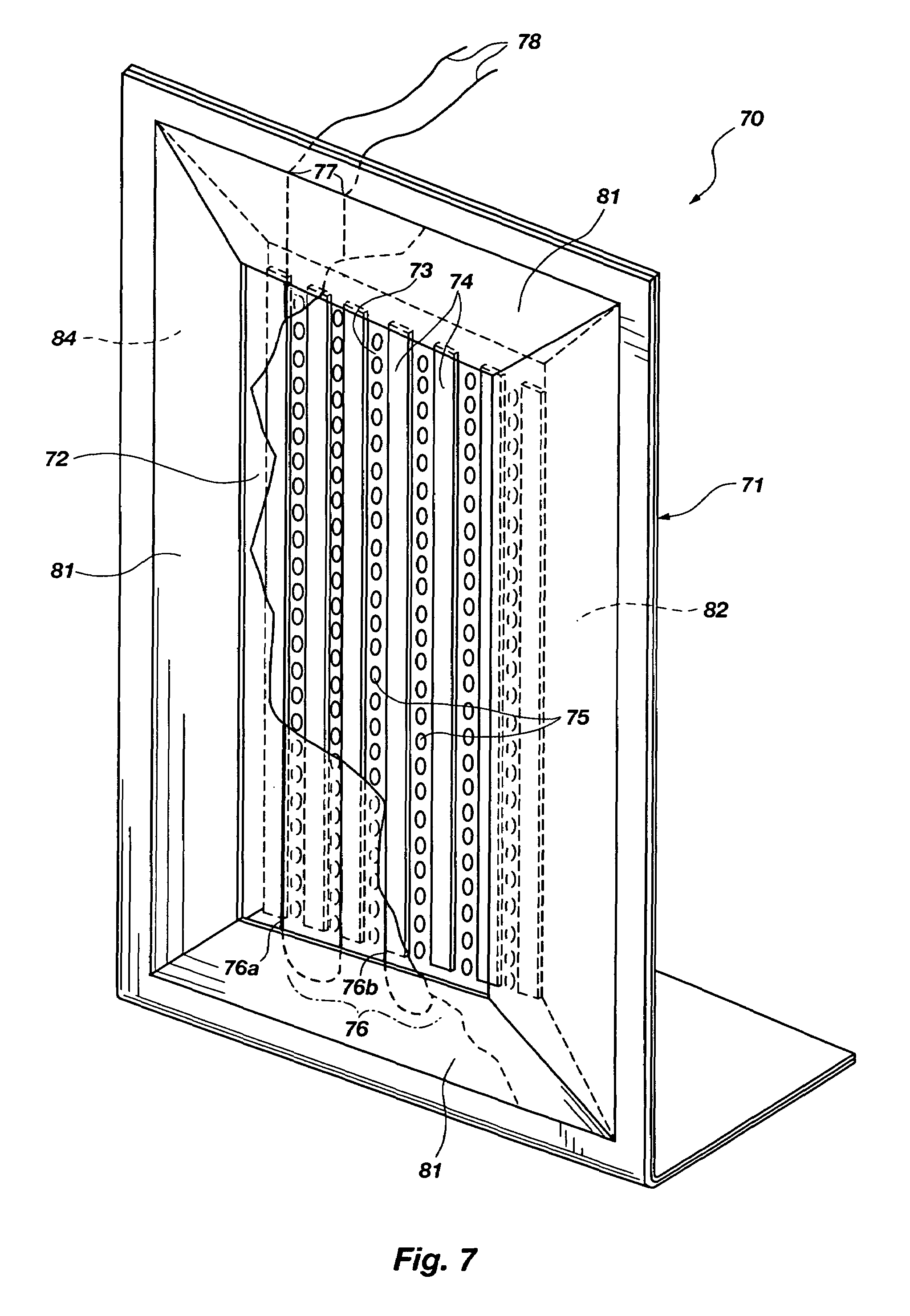Single end planar magnetic speaker
a single-end, magnetic speaker technology, applied in the direction of transducer details, electrical transducers, fibre diaphragms, etc., can solve the problems of unreachable market acceptance, past 65 years of evolution, controlling competitive issues, etc., to achieve equal performance, small size, and favorable construction cost
- Summary
- Abstract
- Description
- Claims
- Application Information
AI Technical Summary
Benefits of technology
Problems solved by technology
Method used
Image
Examples
Embodiment Construction
[0051]FIGS. 5 and 6 illustrate one of the basic discoveries of the present invention which has enable the accomplishment of an inexpensive planar magnetic speaker device which is small in size and surprisingly high in quality audio performance. It includes a surprising observation that, unlike prior art ceramic magnets, a high energy magnet such as neodymium as applied in a double ended or push pull tweeter system, can be doubled in thickness and will generate an additional 3 to 6 dB in acoustic output. This is in direct contrast with prior art experience with ceramic or ferrite magnets of common flux density in planar magnetic systems. In other words, it has been discovered that high energy magnets have the unexpected property of generating greater SPL with increased thickness dimensions than prior art ceramic or ferrite based magnets. Specifically, when the magnetic structure is designed as set forth hereafter, it is sufficiently thin to yield at least a 3 dB increase in SPL based...
PUM
 Login to View More
Login to View More Abstract
Description
Claims
Application Information
 Login to View More
Login to View More - R&D
- Intellectual Property
- Life Sciences
- Materials
- Tech Scout
- Unparalleled Data Quality
- Higher Quality Content
- 60% Fewer Hallucinations
Browse by: Latest US Patents, China's latest patents, Technical Efficacy Thesaurus, Application Domain, Technology Topic, Popular Technical Reports.
© 2025 PatSnap. All rights reserved.Legal|Privacy policy|Modern Slavery Act Transparency Statement|Sitemap|About US| Contact US: help@patsnap.com



